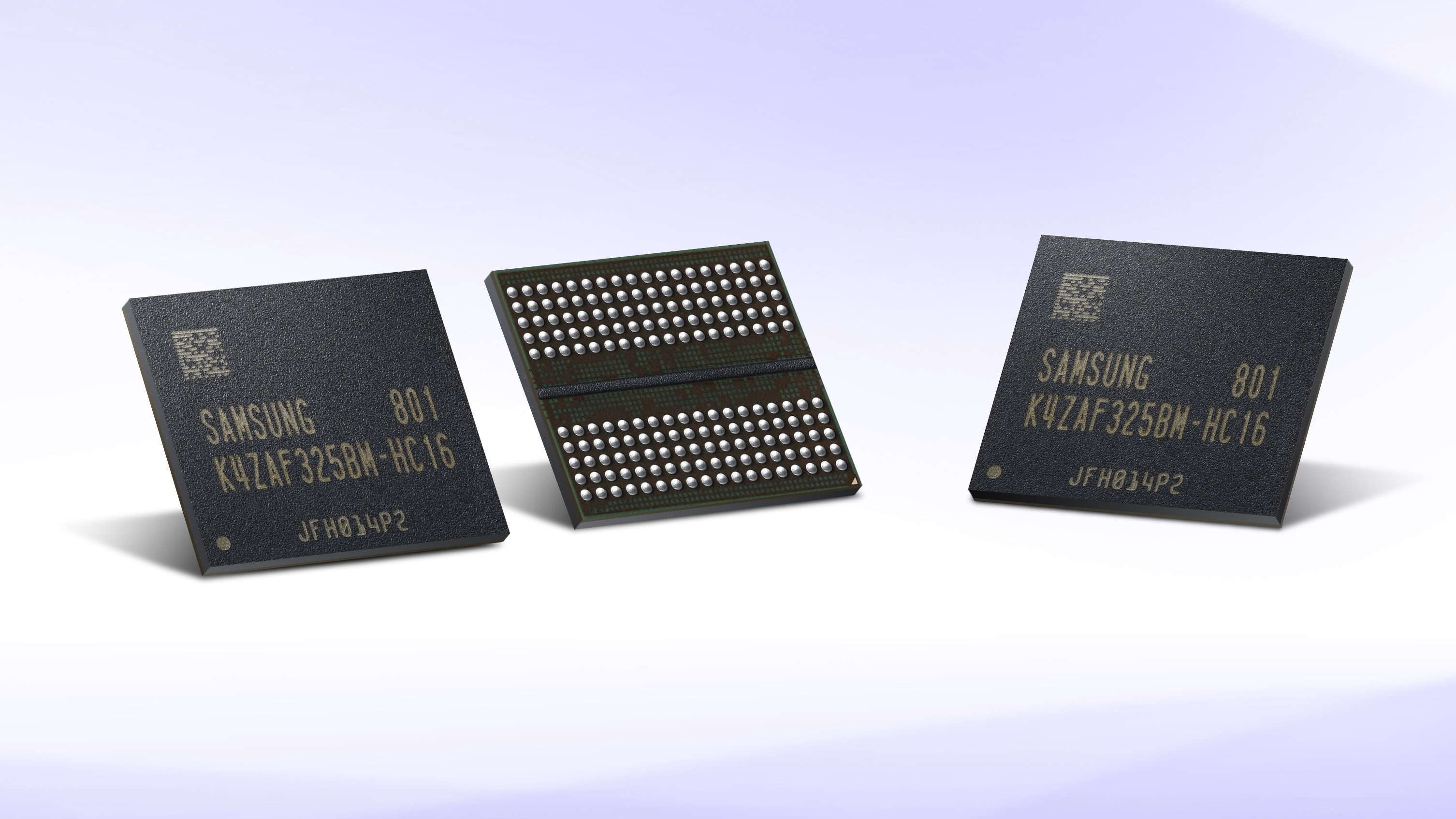Samsung first to mass-produce GDDR6 memory for next-gen graphics cards

Samsung has beaten its rivals, SK Hynix and Micron, to become the first company to begin mass-producing GDDR6 memory chips – the extremely fast graphics memory that will power the next generation of graphics cards.
All three companies, which are big players in the memory market, have announced their plans to produce GDDR6 chips, but Samsung appears to be the first to begin mass-producing them.
In a press release provided by Samsung, the company claims the “new 16Gb GDDR6 offers twice the speed and density levels of currently available GDDR5 to address growing needs of advanced graphics market”.
With monitors coming out that support 8K resolutions, as well more graphically-demanding games and virtual reality applications pushing the limits of existing graphics cards, GDDR6 will be a welcome development, and it’s good to see memory makers working on it already.
Thanks for the memory
According to Samsung, the GDDR6 memory chips are fabricated on a 10nm process and run at 1.35V thanks to what Samsung calls an “an innovative, low-power circuit design”. It comes in a 16Gb density, double that of its 20nm 8Gb GDDR5 memory, which runs at 1.55V and is found in modern graphics cards.
The GDDR6 memory chips from Samsung will also have a 18Gbps pin speed, and be capable of data rates of 72Gbps – a twofold increase over GDDR5’s 8Gbps pin speed.
These numbers are remarkable not just because of the increase over the current generation of memory, but because they're higher than what Samsung had originally claimed at this year’s CES, when it talked of 64Gbps data rates.
Sign up for breaking news, reviews, opinion, top tech deals, and more.
As Jinman Han, senior vice-president of Memory Product Planning & Application Engineering at Samsung explains, “by introducing next-generation GDDR6 products, [Samsung] will strengthen [its] presence in the gaming and graphics card markets and accommodate the growing need for advanced graphics memory in automotive and network systems”.
If GDDR6 isn’t enough to get you excited, then Samsung also announced that it has started production of its second-generation High Bandwidth Memory-2 (HBM2), known as Aquabolt.

These chips, which are aimed at supercomputers and advanced graphics systems, feature a 2.4 Gbps pin speed at 1.2V, almost double the speed of the first generation HBM2.
This offers 307 Gbps data bandwidth, which is 9.6 times faster than an 8GB GDDR5 chip. So, if you thought the graphics that modern PCs are capable of are impressive, it looks like we’ll soon see another leap in graphical performance.
- Here are the best graphics cards currently available in 2018

Matt is TechRadar's Managing Editor for Core Tech, looking after computing and mobile technology. Having written for a number of publications such as PC Plus, PC Format, T3 and Linux Format, there's no aspect of technology that Matt isn't passionate about, especially computing and PC gaming. He’s personally reviewed and used most of the laptops in our best laptops guide - and since joining TechRadar in 2014, he's reviewed over 250 laptops and computing accessories personally.